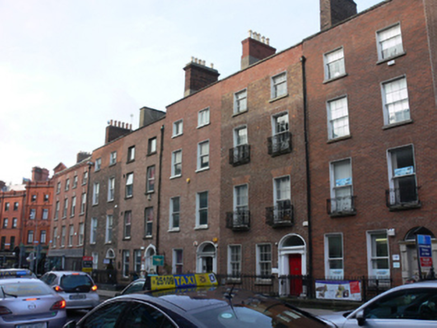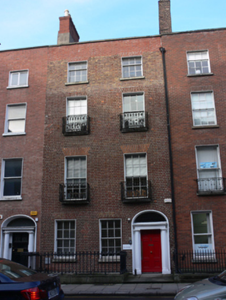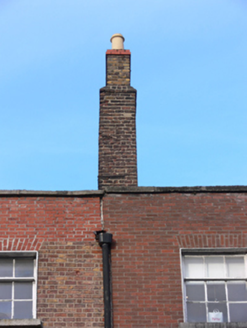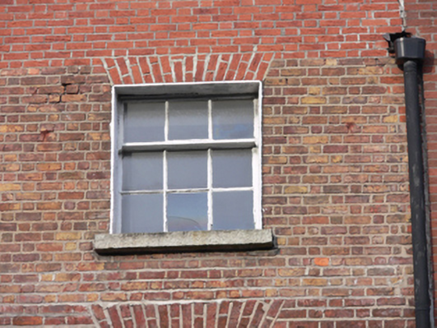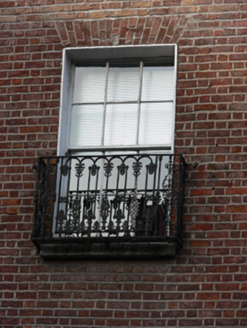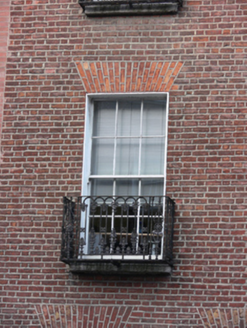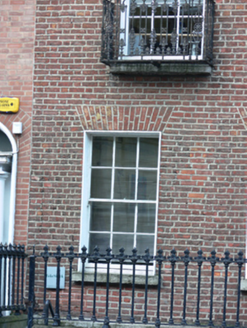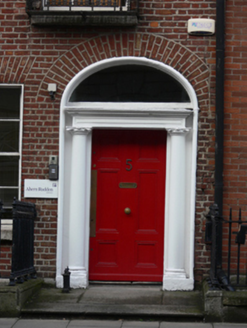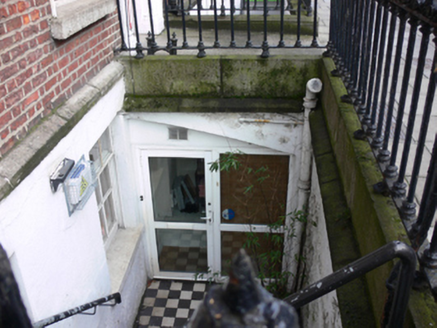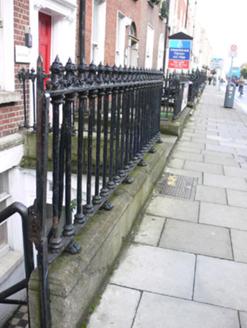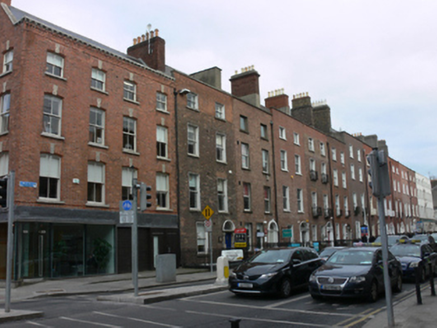Survey Data
Reg No
50020456
Rating
Regional
Categories of Special Interest
Architectural, Artistic, Historical, Social
Original Use
House
In Use As
Office
Date
1760 - 1780
Coordinates
316490, 233781
Date Recorded
24/03/2015
Date Updated
--/--/--
Description
Terraced three-bay four-storey former house over basement, built c.1770, having return to rear elevation, now in use as offices. M-profile pitched slate roof concealed behind repaired red brick parapet with cut granite coping, brown brick chimneystacks having some clay pots, cast-iron down pipes. Red brick, laid in Flemish bond, to walls, with recent brick to parapet, carved granite plinth course over smooth render walls to basement. Square-headed window openings with raised render reveals, granite sills, some cast-iron balconettes, three-over-six pane and six-over-six pane timber sliding sash windows. Segmental-headed door opening with moulded masonry surround, masonry entablature having composite capitals, simple plain fanlight and timber panelled door. Cast-iron railings and matching gate on carved granite plinth wall enclosing basement area. Set back from Clare Street, approached by granite step with cast-iron bootscrape.
Appraisal
Clare Street was developed c.1762 by John Ensor for the sixth Viscount Fitzwilliam. This house has retained its Georgian proportions and detailing, contributing to the coherence of the streetscape. Casey (2005) suggests that it also retains much of the original internal plan form. The doorcase adds elegance to the composition, while the timber sash windows add to the historic character of both building and streetscape. Cast-iron is used to good effect to enliven the façade, notably the balconettes, but also the railings and bootscrape, adding decorative interest. In the 1860s the house was occupied by Gus Rochfort Wade, a solicitor who had his offices here.
